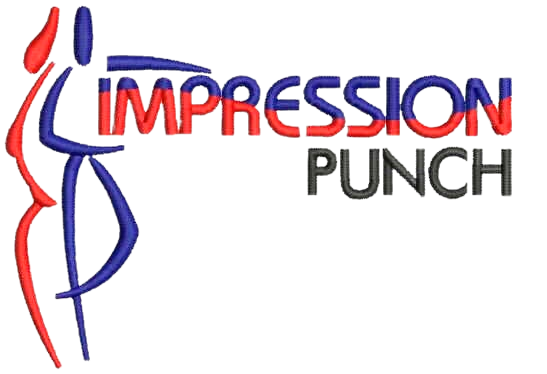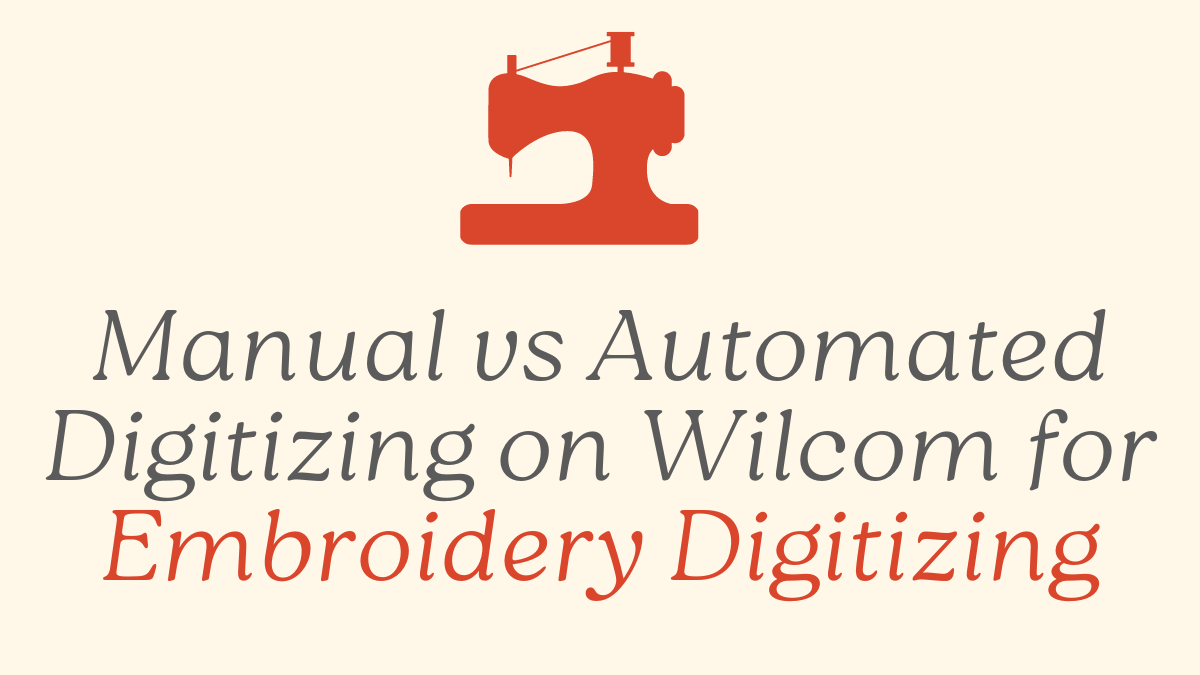When it comes to embroidery digitizing using Wilcom software, there are significant differences between manual and automated digitizing processes. Here’s a detailed comparison between manual and automated embroidery digitizing:
Manual Embroidery Digitizing: –
Pros:
- Precision and Control:
- Manually doing so allows for fine-tuning every aspect of the design including minor details.
- Custom adjustments can be made manually to stitch types, densities, underlay, and pull compensation as per fabric properties.
- Customization:
- Manual digitizing is ideal for complex and detailed designs requiring unique handling. There are many tools we can apply manually as per artwork.
- We can apply artistic touches and personal expertise by using Wilcom manually.
- Quality:
- There are many aspects in digitizing which control quality stitching and that is only possible using manual digitizing.
- Manual digitizing ensures optimal pathing and sequencing, reducing stitch count and production time.
- Creativity:
- Manually digitizing using Wilcom enables creativity and adaptation of designs to specific fabrics or purposes.
- It allows for adjustments based on the embroiderer’s experience and preferences.
Cons:
- Time-Consuming:
- Manual digitizing requires significant time and effort especially for detailed and complex artworks.
- Sometimes manual digitizing costs more time and effort when beginners make mistakes and ruin fabric during stitching.
- Skill-Dependent:
- Digitizing manually quality is highly dependent on the digitizer’s skill and experience. If the digitizer is not experienced; it may not add quality to stitching and may waste a lot of time for embroidery as well.
- Manual digitizing requires continuous learning and practice to master. Software is changing and updating daily, if the digitizer is not updated; he may not maintain quality.
Automated Digitizing
Pros:
- Speed:
- Automated digitizing is significantly faster than manual digitizing.
- Automated digitizing can convert designs into embroidery files in a matter of minutes and saves a lot of time.
- Ease of Use:
- Automated tools are user-friendly and accessible for beginners to understand terms of embroidery digitizing.
- It reduces the need for extensive training or experience and tutoring as well.
- Efficiency:
- It is ideal for simple and straightforward designs but not for complex artworks.
- It is useful for high-volume, repetitive tasks where manual adjustments are minimal.
Cons:
- Lack of Precision:
- May not handle complex designs well, it often requires manual touch-ups.
- Less control over stitch types, densities, and sequencing and other settings which help maintain quality.
- Quality Variations:
- Automated digitizing can result in lower quality compared to manual digitizing. Not every artwork can be digitized automatically due to minor details.
- Because of non control over tools; it often produces more stitches than necessary and ends up increasing production time and material costs.
- Limited Creativity:
- Automated digitizing lacks the ability to make creative and artistic adjustments to add quality in stitching.
- Automated tools may not access small or low resolution details in the artwork which will end up with incomplete digitizing.
Choosing Between Manual and Automated Digitizing
When to Use Manual Digitizing:
- For high-detail, intricate designs.
- When high-quality output is essential.
- For unique, custom embroidery work where artistic input is required.
- When dealing with tricky fabrics or complex designs that require special handling.
When to Use Automated Digitizing:
- For simple, straightforward designs with minimal detail.
- When speed and efficiency are more important than intricate detail.
- For beginners or those without extensive digitizing experience.
- In high-volume production environments where consistency and quick turnaround are critical.
Conclusion
The choice between manual and automated digitizing in Wilcom depends largely on the project’s specific needs. Manual digitizing offers unparalleled precision and quality, making it ideal for complex and detailed designs. Automated digitizing, on the other hand, provides speed and efficiency, suitable for simpler designs and high-volume tasks. A combination of both methods can often yield the best results, leveraging the strengths of each approach where they are most effective.



Leave a Reply